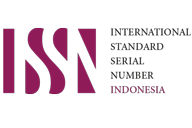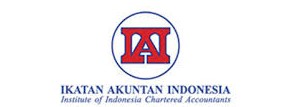Pengaruh Negative Framing dan Monitoring Control terhadap Eskalasi Komitmen dalam Pengambilan Keputusan Investasi
Abstract
This study aims to examine the effect of Negative framing and Monitoring Control on escalation of commitment in investment decision making. This study uses a 2x2 factorial design with four treatments. The hypothesis in this study was tested using the One Way ANOVA test. This study used Accounting SI students at UNP. Using 4 scenario cases, participants were asked to make decisions to see how negative framing and monitoring control affect escalation of commitment when managers will make decisions. The results of this study indicate that negative framing affects managers when making decisions, this is due to the information received by managers. While monitoring control shows the same thing, monitoring control makes managers not escalate their decisions because of supervision.
References
Arimawan, M. S., & Sukirno, S. (2014). Pengaruh Negative Framing Dan Adverse Selection Terhadap Eskalasi Komitmen. Nominal: Barometer Riset Akuntansi dan Manajemen, 3(1), 1-13.
Blanca Mena, M. J., Alarcón Postigo, R., Arnau Gras, J., Bono Cabré, R., & Bendayan, R. (2017). Non-normal data: Is ANOVA still a valid option?. Psicothema.
Brockner, J. (1992). The escalation of commitment to a failing course of action: Toward theoretical progress. Academy of management review, 17(1), 39-61.
CNBC Indonesia. (2019). Rawan Korupsi, Proyek Hambalang. Diakses dari https://www.cnbcindonesia.com/news/20190805213149-8-90037/rawan-korupsi-proyek hambalang-lanjut
Chong, V. K., & Suryawati, R. F. (2010). De-escalation strategy: The impact of monitoring control on managers' project evaluation decisions. Journal of Applied Management Accounting Research, 8(2), 39.
Dwita, S. (2007). The Influence of Adverse Selection and Negative Framing on Escalation of Commitment in Project Evaluation Decisions. Simposium Nasional Akuntansi X.
Fokufuka, P., Fargher, N., Wang, Z. (2014). The Influence of Sunk Costs, Personal Responsibility and Culture on The Tendency of Accountants to Facilitate Escalation of Commitment. Pacific Accounting Review, 26(3):374-391.
Harrel, A., Harrison, P. (1994). An Incentive to Shirk, Privately Held Information, and Managers’ Project Evaluation Decisions. Accounting, Organization and Society, 19(7):569577.
Helmayunita, N. (2015). Pengaruh Adverse Selection, Kontrol Monitoring, Dan Penalaran Moral Individu Terhadap Perilaku Eskalasi Komitmen. Wahana Riset Akuntansi, 3(1), 513-528.
Jensen, M. C., & Meckling, W. H. (1976). Theory of the firm: Managerial behavior, agency costs and ownership structure. Journal of financial economics, 3(4), 305-360.
Kahneman, D., & Tversky, A. (1979). On the interpretation of intuitive probability: A reply to Jonathan Cohen.
Kelly, T. F., & Milkman, K. L. (2013). Escalation of commitment. Encyclopedia of management theory, 1, 257-259.
Koroy, T.R. (2008). Pengujian Efek Pembingkaian Sebagai Determinan Eskalasi Komitmen dalam Keputusan Investasi: Dampak dari Pengalaman Kerja. Simposium Nasional Akuntansi XI Pontianak.
Levin, I. P., Schneider, S. L., & Gaeth, G. J. (1998). All frames are not created equal: A typology and critical analysis of framing effects. Organizational behavior and human decision processes, 76(2), 149-188.
Liang, B., Kale, S. H., & Cherian, J. (2014). Is the future static or dynamic? The role of culture on escalation of commitment in new product development. Industrial Marketing Management, 43(1), 155-163.
Mulia, T. W., Lasdi, L., & Widjanarko, T. A. (2015). Pengaruh hurdle rates dan framing terhadap eskalasi komitmen dalam penganggaran modal. Simposium Nasional Akuntansi, 18.
Sari, N. K. A. P., & Wirakusuma, M. G. (2016). Pengaruh adverse selection dan negative framing pada kecenderungan eskalasi komitmen. E-Jurnal Ekonomi dan Bisnis Universitas Udayana, 5(03).
Sharp, D. J., & Salter, S. B. (1997). Project escalation and sunk costs: A test of the international generalizability of agency and prospect theories. Journal of International Business Studies, 28(1), 101-121.
Simonson, I., & Staw, B. M. (1992). Deescalation strategies: A comparison of techniques for reducing commitment to losing courses of action. Journal of applied psychology, 77(4), 419.
Soenhadji, I. M. (2010). Teori Pengambilan Keputusan. Jakarta: Universitas Gunadarma.
Suartana, I. W. (2005). Model Framing dan Belief Adjustment dalam Menjelaskan Bias Pengambilan Keputusan Pengauditan. Simposium Nasional Akuntansi VII.
Sugiyono. (2017). Metode Penelitian Kombinasi. Bandung: Alfabeta.
Tosi Jr, H. L., & Gomez-Mejia, L. R. (1994). CEO compensation monitoring and firm performance. Academy of Management journal, 37(4), 1002-1016.
Tversky, A., & Kahneman, D. (1981). The framing of decisions and the psychology of choice. science, 211(4481), 453-458.







.png)
.png)
